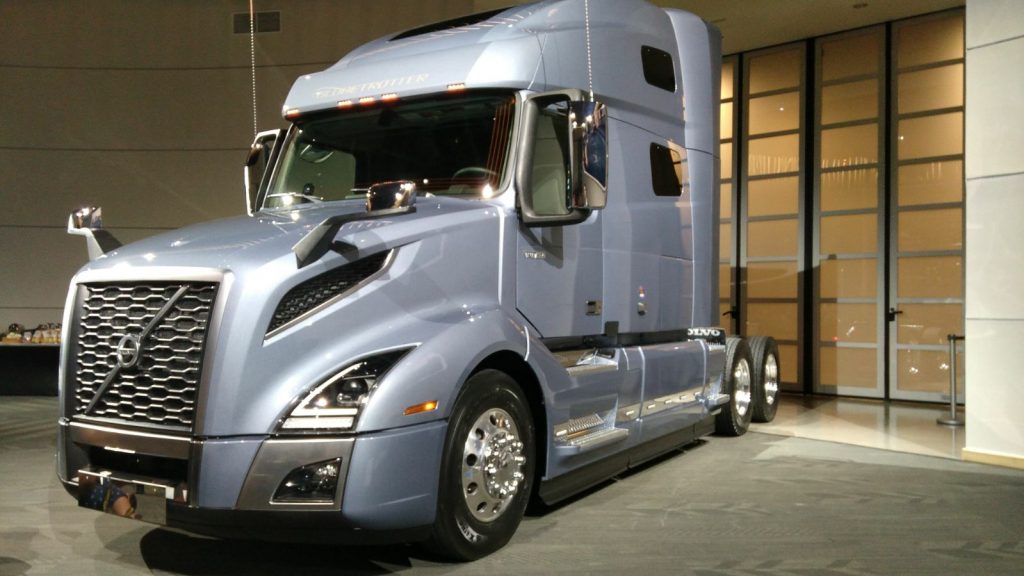Sweden’s Volvo Group disclosed that it experienced a modest increase in deliveries but a decrease in truck orders during the third quarter. This shift in performance is attributed to the company’s proactive measures in anticipation of a decelerating market in 2024. Volvo is leading the way among the four major original equipment manufacturers (OEMs) in announcing their results for the period from July to September, which is traditionally considered the least active part of the year. Paccar Inc., Traton Group, and Daimler Truck are expected to release their reports in the weeks ahead.
“We have successfully mitigated cost inflation with price management and continued to handle disturbances in the supply chain,” Martin Lundstedt, Volvo Group CEO, said in a report on the period.
By the numbers, Volvo reported these year-over-year Q3 figures:
- A 9% increase in net sales to 132.4 billion Swedish kronor(SEK) or $12 billion.
- Adjusted operating income of SEK 19.1 billion compared to SEK 11.9 billion a year ago.
- Adjusted operating margin of 14.4% compared to 10.3%.
- Return on capital employed of 33.7% compared to 27.4%.
Truck orders saw a significant 27% decrease, with only 47,202 vehicles ordered during the quarter. This drop can be attributed to the clearing of inflated backlogs resulting from pent-up demand. In contrast, Volvo experienced a 4% rise in deliveries compared to Q3 2022, with a total of 55,274 trucks delivered.
“We expect our major truck markets to continue to be strong throughout this year as we continue to deliver from our large order books to customers, but forecast lower market levels for next year,” Lundstedt said.
Volvo has upheld its previous projection for the North American heavy-duty truck industry, estimating that it will reach 330,000 units for the entire year of 2023. Looking ahead to 2024, the company has forecasted industry sales to amount to 290,000 heavy-duty trucks.
“We continue to keep a high level of flexibility to manage any mid-term changes in demand,” Lundstedt said.
The slowdown in the U.S. freight market is a consequence of changing consumer behavior, shifting away from the strong focus on purchasing consumer goods that was prevalent during the pandemic. There’s been a noticeable shift towards services such as restaurant deliveries and vacation travel.
In response to this market shift, many truck drivers who initially entered the industry to take advantage of the record-high per-mile rates are now relinquishing their Department of Transportation authorities. Some are opting to join for-hire carriers, while others are exiting the industry altogether.
In the third quarter, North American truck orders dropped by 7%, totaling 17,355 trucks, while deliveries increased by 13% to 15,041 vehicles. This increase in deliveries is reflective of a reduction in the backlog, which is the time between when an order is placed and when it is actually delivered.
As for market share, Volvo Trucks’ heavy-duty truck market share declined from 10.3% to 9% through August compared to the previous year. In contrast, Mack Trucks’ market share remained relatively steady, holding at 6%, a slight increase from the previous year’s 5.9%.
Additionally, Mack Trucks experienced its second strike by the United Auto Workers in four years on October 8. Talks to reach a settlement are set to resume, following a 73% rejection of a tentative agreement by 3,900 union-represented employees.
Volvo Trucks North America and Mack Trucks collectively hold a market share of 15%
Together, Volvo Trucks North America and Mack Trucks hold a combined market share of 15% in North America. However, they trail behind the market leader, Daimler, which includes Freightliner and Western Star trucks and has approximately 40% of the market share. Paccar, with its Kenworth and Peterbilt models, accounts for around 30% of the market share. Traton, with its Navistar International brand, is the smallest among the four major OEMs.
Volvo is emphasizing its early leadership in electric vehicles. In the third quarter, the company secured 1,600 orders for electric vehicles, including transit buses, which translates to an annual rate of nearly 6,000 orders. While this number is relatively small in comparison to diesel trucks, it represents a growing segment of their business. Furthermore, Volvo delivered 1,100 electric trucks and buses during the same quarter, underscoring its commitment to the electric vehicle market.
“It takes time, but we see that this is a strong momentum,” Lundstedt said on a call with analysts Wednesday.
In the recent quarter, the Volvo Group, Renault Group, and CMA CGM Group forged a partnership to work together on emissions-free last-mile deliveries, which happen to be the rapidly expanding sector in the realm of battery-electric technology adoption. It’s worth noting that Renault and Volvo are already engaged in cooperation related to compact trucks. The overarching objective of this collaboration is to develop a completely new generation of electric vans that are software-defined, along with comprehensive digital and physical services spanning from start to finish.





